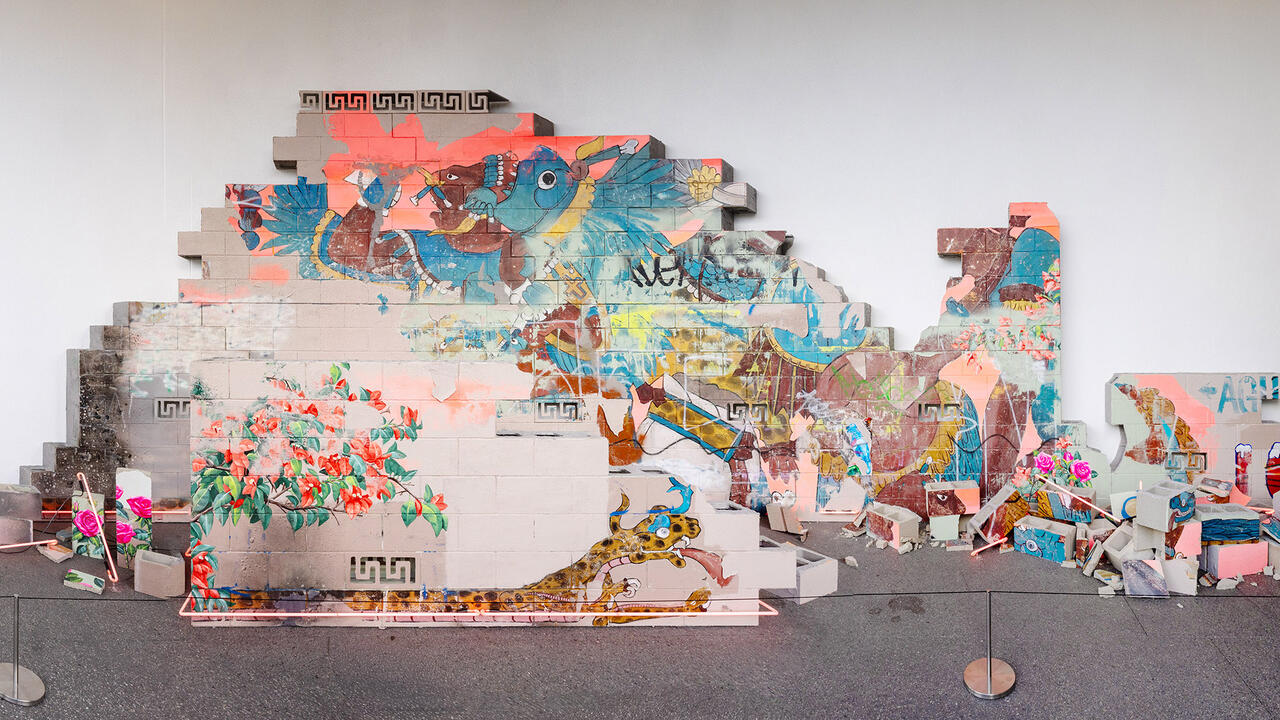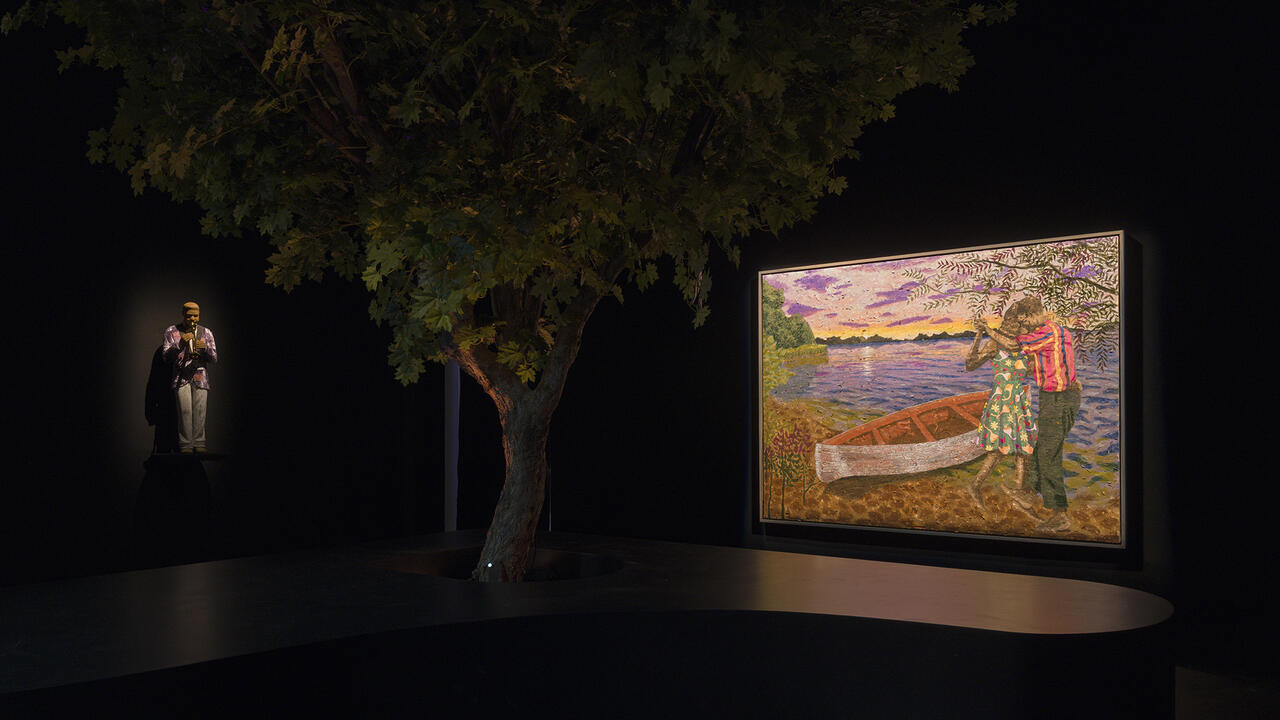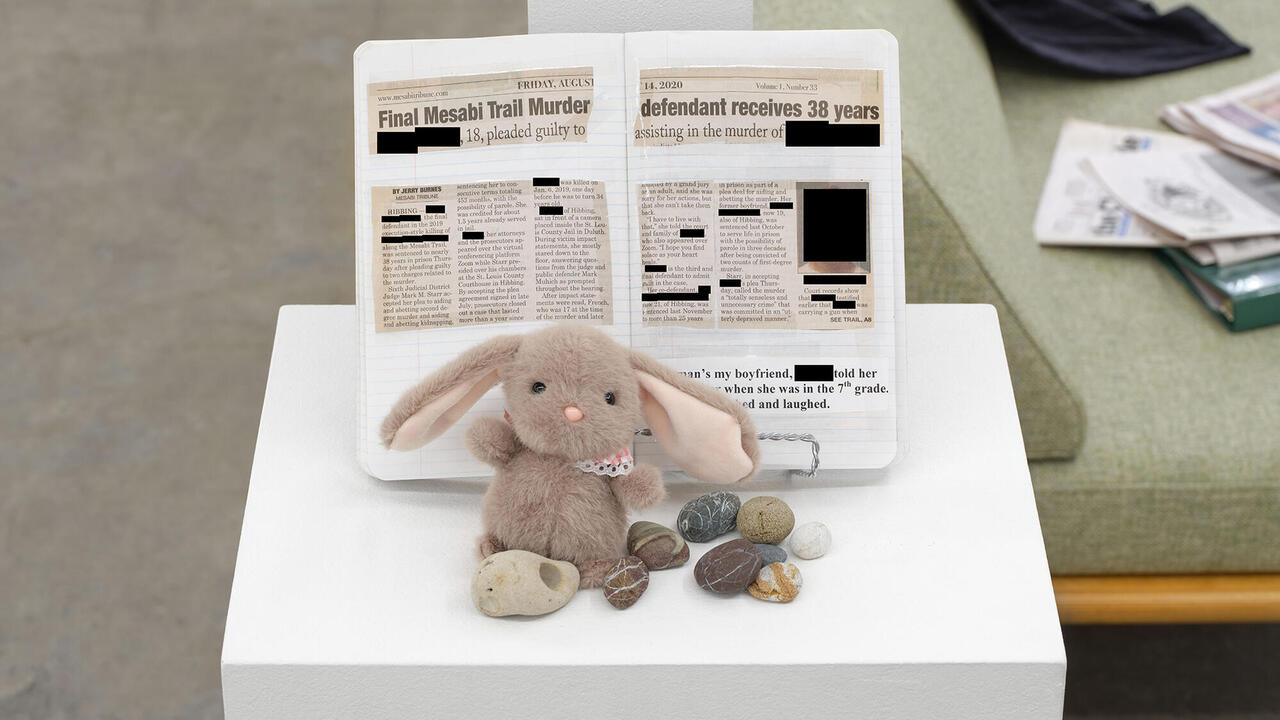Stanya Kahn
Susanne Vielmetter Los Angeles Projects, USA
Susanne Vielmetter Los Angeles Projects, USA

Everything’s going to the wrong places, and it comes out gibberish,’ says Stanya Kahn’s mother of the artist’s ageing grandmother, in her new hour-long film, Stand in the Stream (2011–17). Both Kahn’s mother and grandmother suffered from dementia toward the ends of their lives and if sometimes, connections got made, increasingly often they didn’t. It is tough to watch, because who knows what it’s like inside the brain of a person for whom common language has broken down? The film seems to mediate against exactly this kind of isolating loss of sense, drawing an embattled continuity between the generations of the artist’s own family and through a succession of activist movements, and doing so across a frenzy of personal clips in some half-dozen formats. The montage is loose and rhythmic, but also uneven; a sound mix (produced in collaboration with Alexia Riner), almost danceable at times, cuts out abruptly. Stand in the Stream never relaxes into continuity for very long. It is not a timeline. Kahn’s mother appears in different states of decline, achronologically, then passes away; her son grows up quickly.

The film’s credits insist, and the gallery materials reiterate, that all footage is either filmed live or made up of screen-captures of live streams – which is to say: Stanya Kahn Was There. In a world of mindless image feeds, the camera’s witness can feel impersonal and diluted. Stand in the Stream reasserts a certain démodé documentary aspect of the photographic image: a first-person authority also claimed by citizen videographers of, say, police murders of black men. It bears repeating that when you watch a live stream
of a line of police advancing through the brown grass at Standing Rock, there’s a real body within range of their riot batons.

As a short, subjective history of protest, popular resistance and state intransigence, Stand in the Stream is a timely, topical film; Kahn has been working on it since 2011, but there’s no need to spell out why this is the right moment for its release. Yet, the artist anchors the film in her own family’s history of generational activism: in one scene, Kahn holds up a series of her mother’s books, which include an early edition of Our Bodies, Ourselves (1971) and vintage copies of The Black Panther newspaper; in another, the camera pans over a newspaper article in which Kahn, then 22, was beaten by California Highway Patrolmen at a demonstration against the Gulf War. Kahn’s son joins her at the Women’s March in Los Angeles.

Stand in the Stream opens with snowfall through pines and closes with a rally at LAX airport protesting Donald Trump’s first Muslim ban. Throughout, Kahn sets the ebb and flow of political humanism against the wider, inevitable rhythms of birth and death. But, again, Kahn avoids the salve of resolution, even an aesthetic one – and the film’s many beautiful moments are also its most jarring. Johann Pachelbel’s Canon in D (c.1680) plays over a montage of the artist’s mother’s funeral rites and a drive through a brightly lit motorway tunnel. Another quick, almost irreverent sequence lines up footage of dirt filling Kahn’s mother’s grave; a squirrel burying a nut; the artist pulling at a root; or rinsing off the placenta from her son’s birth with a garden hose. It’s an absurd, discontinuous and gut-wrenching witness – a brief laugh gulping down an epochal sob. Ditto the imagistic continuity between a live stream of police firing rubber bullets and stun grenades at demonstrators in Ferguson and the green and black night vision shots of the 1991 bombing of Baghdad, one of the first live streams of war. It’s so senseless, it’s profound.
Stanya Kahn, Stand In The Stream (still), 2011-2017, HD color video stereo sound. Courtesy: the artist and Susanne Vielmetter Los Angeles Projects, Los Angeles






















